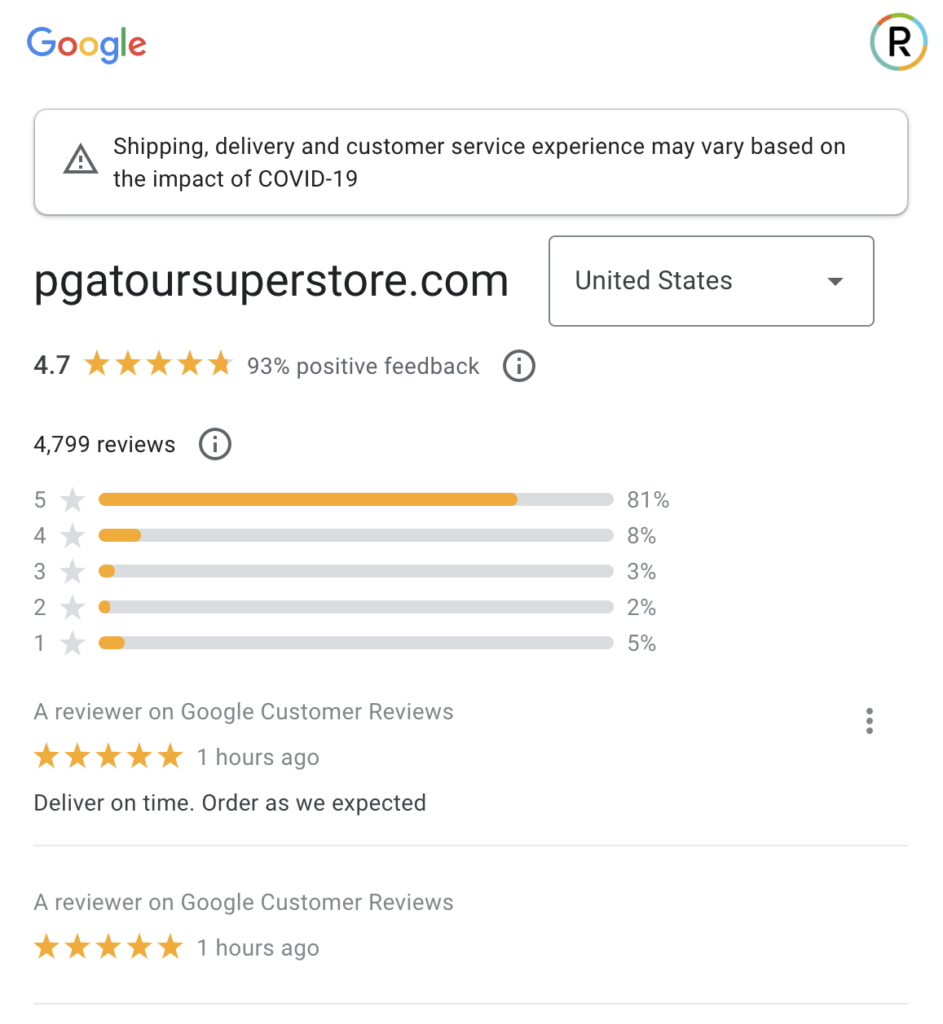Ecommerce traffic and purchases have risen to previously unfathomable heights, fueled by the pandemic and new habits formed during the stay at home orders. This transformation is really laid bare in our Holiday Consumer Survey, which shows that a massive 64% will spend more online this year than last.
During this period, engagement with review content has surged. Again, our Holiday Consumer Survey fully endorses this trend (37% of consumers say they will pay more attention to ratings and reviews when making purchase decisions this year than last).
Why is this? Well, first and foremost, it’s the fact more shopping is occuring online than ever before. However, consumers are also buying products they’ve never bought before and are looking for validation before buying.
Either way, there has never been a better time to acquire new customers.
One of the most critical channels for doing this is how you rank and appear on search engines, and more specifically how you as a business are rated and reviewed on there.
Google is obviously the preeminent search engine that pervades all aspects of digital life. So how you show up there is incredibly important. In fact, 35% say they begin their purchase journey on a search engine – when they will see your Seller Rating.
For those that advertise on Google, Google Seller Ratings are an easy and highly effective way to add social proof to your ads. This blog is meant to provide a quick overview of Seller Ratings so you can determine if they are right for you.
What are Google Seller Ratings?
Google Seller Ratings is a Google Ads extension that displays a rating between one and five stars that shows up on search ads. It’s an automated extension that is calculated by aggregating customer reviews from various sources that Google trusts. The resulting rating is then displayed within the body of the ad.
If you’ve ever typed into Google’s search bar, you’ve seen Google Seller Ratings.
It is the star rating that displays underneath the URL on Google ads. While Seller Ratings are most often used by ecommerce companies, any company with a digital presence can use Google Seller Ratings.
Note: Seller Ratings are for the entire site, not individual products.

What are the benefits of Google Seller Ratings?
If they are not already, Seller Ratings should be a critical part of your digital strategy. Why? According to Google, they can increase the click-through rates (CTR) of your ads by up to 10%. This is super important because a higher CTR means a higher quality score — which reduces your CPC (cost per click) and improves your ad rank.
Bottom line: Seller Ratings optimize the performance of your Google Ads. More click throughs, more eyeballs on your site and – in turn – more sales.
Which makes complete sense. Your Seller Ratings are determined by a cumulative and aggregated volume of trusted customer reviews. They are a direct reflection of the experiences your customers have had while dealing with your business.
This provides social proof for your brand right on Google search results pages, increasing shoppers’ trust in your business and giving them the confidence they need to click through to your site.
How to get Google Seller Ratings
The following criteria must be met for Google Seller Ratings to show up next to your ads:
- There must be at least 100 verified site reviews in the country of the searcher
- Those reviews must have been collected within a the last 12 months
- The reviews must have an average star rating of at least 3.5 stars
Once you have collected the number of reviews required, Google will (after a period of indexing time of up to 6 weeks) display Seller Ratings next to your paid Google Ads and Google Shopping listings.
Pro tip: We recommend collecting more than 100 reviews in every 12 month period on a recurring basis. Google values recency and authenticity, as do your customers.
Note: we have a best-in-class authenticity policy, meaning anything that meets our standards is nearly always accepted by Google.
Another thing to note: Google works with trustworthy authorities – such as PowerReviews – to collect seller ratings that are then displayed when users search on your company name. This means Google accepts reviews from other sources, which in turn makes capturing content in the volumes required easier as it means no reviews go to waste.
How do I check if my Seller Ratings are working properly?
First, check if you have met all of the criteria listed above. Assuming this is the case, there are a number of ways to check if your Seller Ratings are working.
Here are a couple of tests you can try:
- Go to Google shopping and type your store domain into the search bar. When looking at the results, check to see if Google Seller Ratings are showing. Make sure you are in “list” view since the grid view may not have enough room for the Seller ratings to show.
- Edit the following URL to replace “{yourwebsite}” with your homepage URL: https://www.google.com/shopping/ratings/account/lookup?q={yourwebsite}.
- For example, PGA Tour Superstore would be: https://www.google.com/shopping/ratings/account/lookup?q=https://www.pgatoursuperstore.com/

You’ll be able to view information about your store and a seller rating if your site meets the minimum seller rating thresholds. A country selector will allow you to view this information per country. Use the dropdown menu to see your seller ratings in different countries.
How to improve your Google Seller Ratings
There are a number of ways to improve your Google Seller Ratings.
- Provide a good customer experience
At the risk of stating the obvious, it starts with the quality of the experience you deliver your customers. There’s really no way of gaming or hacking this.
The whole point of customer reviews is that they are intended to provide authentic “social proof” or guidance to help other consumers make decisions. So focus on your customers and reap the rewards. - Ask!
Although some customers are super motivated to provide their opinion to the world, this isn’t true of all. Many have a great perception of your brand but need some encouragement to share it so prominently. Asking in the right way at the right time is therefore critical.
- Choose when you make the ask
Again, may sound obvious but make sure you make the ask at an appropriate time after a successful engagement (i.e. after a customer buys a product, rather than if they return it following a bad experience). Obviously, automation is critical to scaling this to a level that Google looks for.
- Optimize how you make the ask
Think about the content of the email. There are a few fundamentals you need to get right. They include:
– Keep it short: no one reads long marketing emails
– Be clear on the ask: you are asking for a review of your entire business, not a specific product. Also provide specific and brief guidance on the content you are seeking, why you’re asking, and deliver a clear call to action.
– Add an element of personality: Asking in a robotic and transactional manner is unlikely to get the result you want.
– Simplify the entire process: Make sure the actual process of providing the review is easy and straightforward.
Conclusion
Google Seller Ratings are a critical component in the purchase journey for brands. They help to get more eyeballs on your site and drive new traffic to product pages to generate new sales. However, Google has strict guidelines in place to ensure it accurately ranks businesses that you need to be aware of. To make sure they display properly, you need to meet these. As with generating product reviews, there are some key best practices you need to follow to generate more and better Google Seller Ratings. Implement these and make Google a critical and lucrative sales generation channel.
The PowerReviews Ratings & Reviews platform enables you to seamlessly capture and display Google Seller Ratings. If you’re one of our customers and would like to find out more, reach out to your Client Success Manager or our Support team today.


